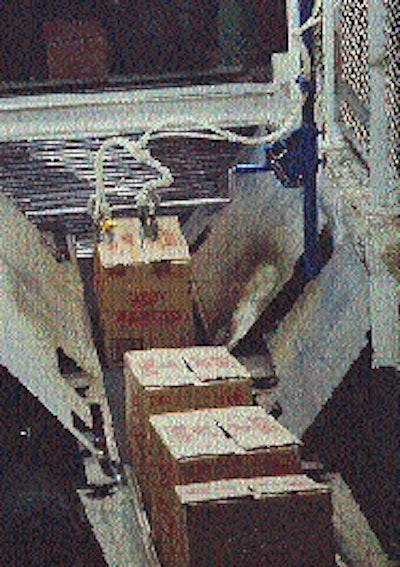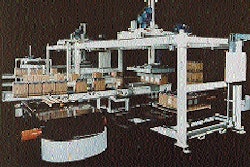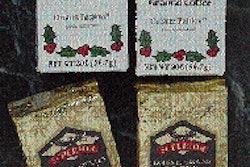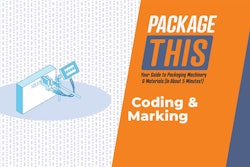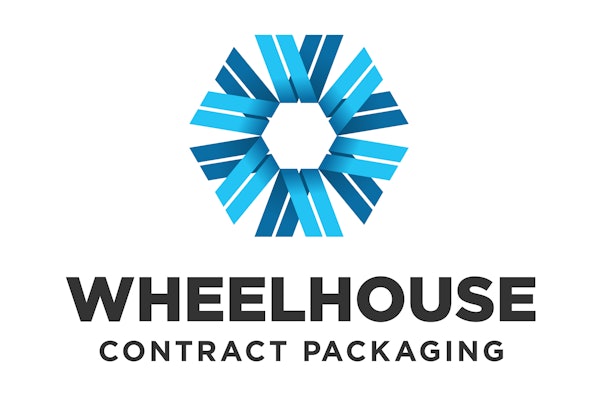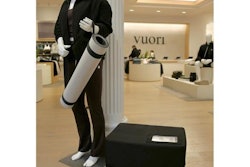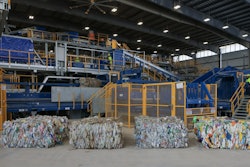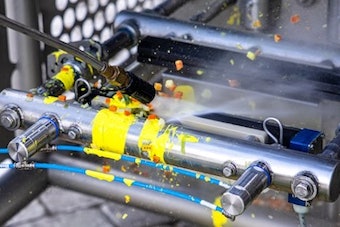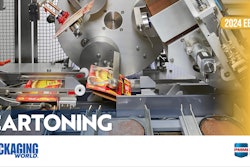Instead of sending every pallet load to a stretch wrapping machine, Miller now secures most of its loads with a cohesive liquid that is applied by spray nozzles mounted near the end of the packaging lines. A photo-eye triggers the nozzles to spray the tops of corrugated cases as they pass down the conveyor. Treated cases are immediately stacked on a pallet where they bond or lock together as they dry. A case can be separated by lifting its corner straight up to break the seal. The company decided to test the new system after a review of its palletizing operations, says Mike Rauh, technical packaging coordinator of corporate quality assurance. "What we needed to do," he explains, "was to eliminate the double handling required to wrap our pallet loads." At that time, Miller relied on off-line wrappers to apply stretch film to secure pallet loads. That meant moving loads by forklift from the palletizer to the stretch wrapper, and then moving from the stretch wrapper to the truck. The in-line spray system means loads are moved only once, from the palletizer to the truck. Not only does that reduce labor costs, but it also frees up floor space that had been occupied by the wrappers. Called Lock'N'Pop, the system is manufactured by Key Tech Corp. (Mukilteo, WA) and was first tested at the Trenton plant a couple of years ago. Since then, Miller has reported a 20% reduction in handling costs and a 10% reduction in material costs. Reduced maintenance Rauh reports that Miller has experienced additional savings because the new system requires less attention. The stretch wrap machines had to be reloaded with plastic film two times each shift; the spray system requires a supply change only once a week. A central pumping station works from a 250-gal tote to feed the spray nozzles. When a tote runs low, an automatic alarm lets workers know it's time to replace the tote. According to Tim Stiffler, brewing technician, the pumping station has two pumps so the filters can be cleaned easily. "When we have a few free minutes, we just switch it over and clean the filters. There's really no major time involved. We do it once a week. In the long run it's very cost effective." Rauh estimates that the maintenance cost of using the spray system is about one-fifth the cost of using off-line stretch wrap machines. When the system was first adopted, Willie Harvey, plant distribution team manager, was less concerned with the numbers and more concerned with how drivers and distributors would react to it. Over a period of four months Miller conducted a series of tests. Test pallet loads were assembled with the cohesive system, warehoused, and then trucked over long distances. Harvey's team identified the exact application density that would allow truck drivers to separate the cartons from their pallets easily, while still providing a bond strong enough to withstand the rigors of over-the-road shipping. "We wanted to use the product," says Harvey, "and we wanted to make sure that the route drivers were happy with it." Persuading distributors Distributors, too, had to be satisfied. Harvey recalls their skepticism. "A lot of distributors going into it said, 'Hey, I want stretch wrap. That stuff won't hold.' But we've educated a lot of drivers and distributors. We let them see our operation, let them see what we are doing. That works wonders for us." Harvey makes it a point to call 25 to 30 distributors each month to get an informal status report on how Miller and the new system are doing. The company also routinely invites both distributors and drivers to observe their operation and learn more about the new method of pallet securing. According to Harvey, most now favor the system, which actually facilitates loading operations. Workers can quickly break down a loaded pallet without jeopardizing its structural integrity. "When a trailer comes in to be loaded," says Harvey, "we want to get it in and out as quickly as possible without any disruption or cases falling off the pallets." Also, when the load arrives at the distributor's warehouse, he doesn't face the inconvenience and expense of disposing of plastic wrap. Producing at a rate of 5.2 million barrels/yr of beer, plant savings really mount up fast. "When you have off-line wrappers- as we historically have at Miller-you add the labor cost to the savings in materials. This system is probably one-fifth the cost of stretch wrapping," says Rauh. The fact that the sprayed solution is non-toxic and biodegradable is another plus for Miller, according to Harvey. "With all of the restrictions coming out of Washington, the landfills, the cost of hazardous waste or anything of that nature, the industry is always looking for ways to resolve those kinds of issues," he says. "Anytime you can keep out of landfills, it's a step in the right direction."
